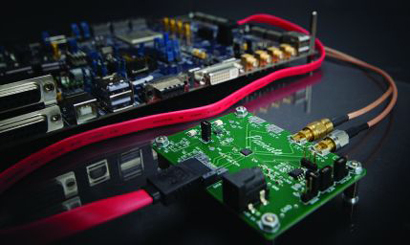What Does The Future Hold For PMR
While no-one can accurately predict what communications will look like in the future, Chris Lorek (SMC) explores the trends that will most likely influence two-way radio’s destiny

It’s only recently that we’ve started to see software-defined radio (SDR) in commercial use, primarily on HF from companies such as Codan and Barrett, although it has been in amateur radio and military radio use for some time.
The Wireless Innovation Forum was established in 1996 and is a non-profit international industry association dedicated to creating a revolution in wireless communications based on reconfigurable radio.
Now, 20 years later, we’re starting to reap the benefits of SDR technology in commercial VHF/UHF two- way radio, as digital technology becomes more widely available at low cost.
An average SDR currently uses little analogue circuitry, typically a wideband transmitter power amplifier and front-end amplification and selectivity for VHF/UHF receive. Recently a transceiver design based entirely on digital technology, the Pizzicato, was revealed.
The Pizzicato is the world’s first fully digital radio transmitter
SDRs are flexible enough to allow wideband operation along with multimode transceive capability including spread spectrum. This latter mode allows several transceivers to operate in the same geographical location on the same frequency with very little interference, and is typically combined with appropriate error detection and correction techniques within the transceiver.
Dynamic transmitter power adjustment can typically also be employed, to lower the transmit power to the minimum necessary and hence reduce the near-far problem along with lessening interference to other users. This technique has already been used in some analogue and digital transceivers, but a SDR makes this extremely simple. Along with the transceiver circuitry, integrated software- defined antennas can also be used. These can dynamically lock on to a directional signal so that receivers can more effectively reject interference from unwanted directions.
SDRs along with software-defined antennas are also significant enablers of cognitive radio. My belief is that virtually all two- way radios in the foreseeable future will use SDR technology. In the long term, software- defined radios are also expected by SDR promoters such as the Wireless Innovation Forum to become the dominant technology in radio communications.
See http://www.smc-comms.com/what-does-the-future-hold-for-pmr for the full report.
CONTACT
Nick Deabill
SMC Group
nick.deabill@smc-comms.com
www.smc-comms.com
+44 2380 246223
Thursday 7 July 2016 / file under Telecommunications | Military | Electronics



